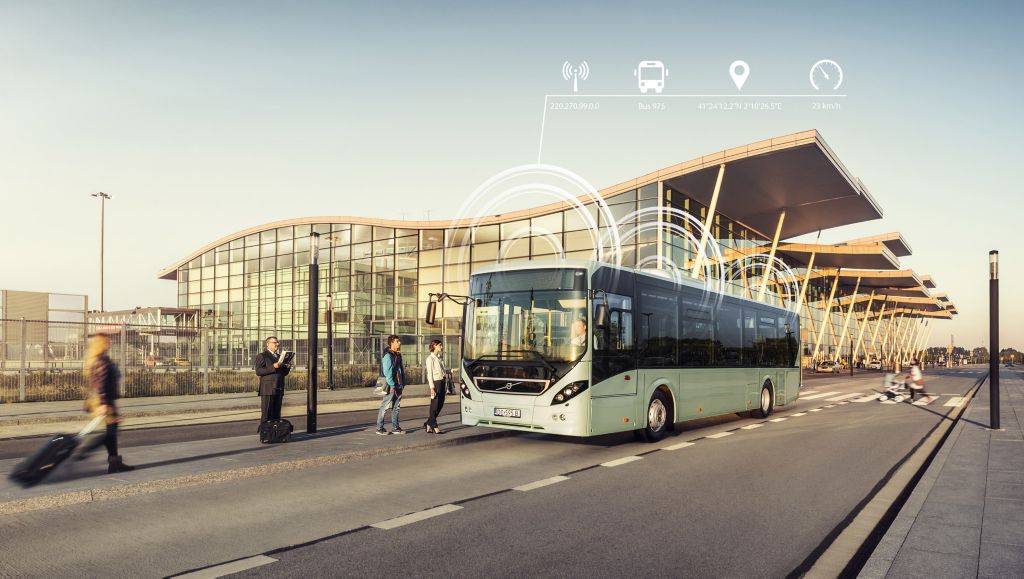How connectivity is changing bus operations


Today, more than 20,000 Volvo buses are currently connected and sharing data every month, of which 11,000 are actively subscribing to Volvo Buses’ connected services. This includes I-Coaching, Zone Management and Vehicle Monitoring.
“We have come a long way in terms of being able to use data to help our customers save fuel, improve safety, and increase uptime,” explains Henrik Bojö, Global Director Connected Services at Volvo Buses. “For example, we can understand how a vehicle is being driven, how it is being used, what is consuming excessive fuel and then we can advise the driver and operator on how to be more efficient. We are also using connectivity for preventative maintenance, improved safety and increasing customer uptime.”
With access to real-time information, we can create transport systems that better adapt to passenger needs.
As the number of connected vehicles continues to increase, vast amounts of data is being generated, and Volvo Buses is continuously working to use it to its full potential. “Right now, it is like a goldmine, where we have an abundance of great data and we are still finding new ways to use it to maximise customer uptime and productivity,” says Henrik Bojö. “Once you can turn data into valuable information that customers can act upon immediately, that is when we can create real benefits.”
The possibilities are seemingly endless, with huge gains set to be made in terms of safety, productivity, uptime and efficiency. Connectivity will enable buses to not only connect with each other but with other transport modes and infrastructure, and create smoother, seamless public transport systems. Bus operators will be able to better track their fleets and adapt capacity according to demand. As predictive maintenance continues to improve, bus owners can have greater confidence in the reliability of their fleets while minimising replacement costs and workshop visits.
“The more you know the better decisions you can make,” says Jenny Osbeck, Fleet Management Service Owner at Volvo Buses. “With access to real-time information, we can create transport systems that better adapt to passenger needs. Essentially, we want to expand from ‘reporting’ services – where we provide our customers with information – and step up to recommendations for actions or ‘suggesting’ services on-demand, where we can guide the customer on how to improve profitability, uptime and safety.”
As the industry adapts and explores the opportunities made possible by connectivity, Jenny Osbeck believes that sharing data and creating open platforms will be essential. “If we can help create a bigger eco-system and involve third parties in developing new solutions, then the range of solutions available will be far greater. Our team at Volvo Buses has a massive backlog of great ideas that have huge potential for creating customer value. With collaboration and a dynamic eco-system, we will make this possible.”
Connected services offered by Volvo Buses today
Zone management
A solution that enables operators to enforce speed zones in certain locations, or in the case of hybrid vehicles, enforce the use of electric drivelines in areas sensitive to noise or carbon emissions.
I-coaching
A system for monitoring driving behaviour and identifying areas for improvement such as excessive idling, curving, and harsh braking, speeding, revving and acceleration. Instant feedback is sent to drivers while operators can access aggregate analyses of their entire fleets.
Vehicle monitoring
A service that assists customers to keep their vehicles on the road and support their operations. Information transmitted from the bus is analyzed and provide a decision on the actions to be performed.
Fleet management
A real-time data-based service that provides real time detailed information on entire fleets including fuel consumption, emissions and positioning.